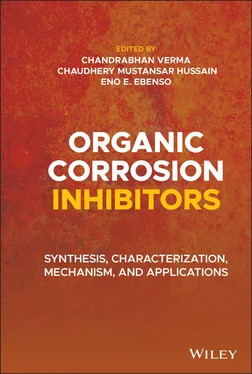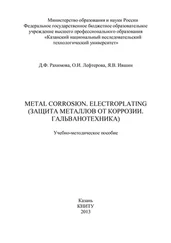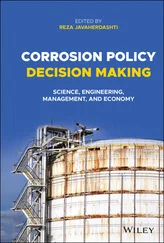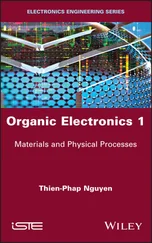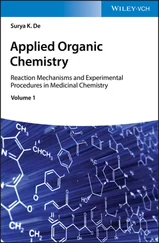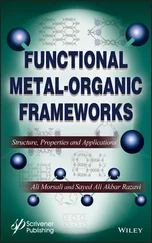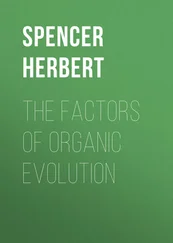49 49 Jensen, B. (2016). Investigation into the Impact of Solid Surfaces in Aqueous Systems. University of Bergen.
50 50 Obot, I., Haruna, K., and Saleh, T. (2019). Atomistic simulation: a unique and powerful computational tool for corrosion inhibition research. Arabian Journal for Science and Engineering 44: 1–32.
51 51 Casewit, C.J., Colwell, K.S., and Rappe, A.K. (1992). Application of a universal force field to main group compounds. Journal of the American Chemical Society 114: 10046–10053.
52 52 Rappe, A.K., Casewit, C.J., Colwell, K.S. et al. (1992). UFF, a full periodic table force field for molecular mechanics and molecular dynamics simulations. Journal of the American Chemical Society 114: 10024–10035.
53 53 Hagler, A.T., Huler, E., and Lifson, S. (1974). Energy functions for peptides and proteins. I. Derivation of a consistent force field including the hydrogen bond from amide crystals. Journal of the American Chemical Society 96: 5319–5327.
54 54 Hagler, A.T. and Lifson, S. (1974). Energy functions for peptides and proteins. II. Amide hydrogen bond and calculation of amide crystal properties. Journal of the American Chemical Society 96: 5327–5335.
55 55 Lifson, S., Hagler, A.T., and Dauber, P. (1979). Consistent force field studies of intermolecular forces in hydrogen‐bonded crystals. 1. Carboxylic acids, amides, and the C:O.cntdot..cntdot..cntdot.H‐ hydrogen bonds. Journal of the American Chemical Society 101: 5111–5121.
56 56 Brooks, C.L. (1989). Computer simulation of liquids. Journal of Solution Chemistry 18: 99–99.
57 57 Bahlakeh, G., Ramezanzadeh, M., and Ramezanzadeh, B. (2017). Experimental and theoretical studies of the synergistic inhibition effects between the plant leaves extract (PLE) and zinc salt (ZS) in corrosion control of carbon steel in chloride solution. Journal of Molecular Liquids 248: 854–870.
58 58 Chafai, N., Chafaa, S., Benbouguerra, K. et al. (2017). Synthesis, characterization and the inhibition activity of a new alpha‐aminophosphonic derivative on the corrosion of XC48 carbon steel in 0.5 M H2SO4: Experimental and theoretical studies. Journal of the Taiwan Institute of Chemical Engineers 70: 331–344.
59 59 Deyab, M.A., Osman, M.M., Elkholy, A.E., and Heakal, F.E. (2017). Green approach towards corrosion inhibition of carbon steel in produced oilfield water using lemongrass extract. RSC Advances 7: 45241–45251.
60 60 Fouda, A.S., Ismail, M.A., Abousalem, A.S., and Elewady, G.Y. (2017). Experimental and theoretical studies on corrosion inhibition of 4‐amidinophenyl‐2,2 '‐bifuran and its analogues in acidic media. RSC Advances 7: 46414–46430.
61 61 Heakal, F.E., Attia, S.K., Rizk, S.A. et al. (2017). Synthesis, characterization and computational chemical study of novel pyrazole derivatives as anticorrosion and antiscalant agents. Journal of Molecular Structure 1147: 714–724.
62 62 Lgaz, H., Salghi, R., Jodeh, S., and Hammouti, B. (2017). Effect of clozapine on inhibition of mild steel corrosion in 1.0 M HCl medium. Journal of Molecular Liquids 225: 271–280.
63 63 Meng, Y., Ning, W.B., Xu, B. et al. (2017). Inhibition of mild steel corrosion in hydrochloric acid using two novel pyridine Schiff base derivatives: a comparative study of experimental and theoretical results. RSC Advances 7: 43014–43029.
64 64 Roy, P., Saha, S.K., Banerjee, P. et al. (2017). Experimental and theoretical investigation towards anti‐corrosive property of glutamic acid and poly‐gamma‐glutamic acid for mild steel in 1 M HCl: intramolecular synergism due to copolymerization. Research on Chemical Intermediates 43: 4423–4444.
65 65 Sanaei, Z., Bahlakeh, G., and Ramezanzadeh, B. (2017). Active corrosion protection of mild steel by an epoxy ester coating reinforced with hybrid organic/inorganic green inhibitive pigment. Journal of Alloys and Compounds 728: 1289–1304.
66 66 Srivastava, V., Haque, J., Verma, C. et al. (2017). Amino acid based imidazolium zwitterions as novel and green corrosion inhibitors for mild steel: Experimental, DFT and MD studies. Journal of Molecular Liquids 244: 340–352.
67 67 Zhang, C. and Zhao, J.M. (2017). Synergistic inhibition effects of octadecylamine and tetradecyl trimethyl ammonium bromide on carbon steel corrosion in the H2S and CO2 brine solution. Corrosion Science 126: 247–254.
68 68 Quraishi, M.A., Chauhan, D.S., and Saji, V.S. (2020). 3 ‐ Computational methods of inhibitor evaluation. In: Heterocyclic Organic Corrosion Inhibitors (eds. M.A. Quraishi, D.S. Chauhan and V.S. Saji), 59–86. Elsevier.
69 69 Verma, C., Lgaz, H., Verma, D.K. et al. (2018). Molecular dynamics and Monte Carlo simulations as powerful tools for study of interfacial adsorption behavior of corrosion inhibitors in aqueous phase: a review. Journal of Molecular Liquids 260: 99–120.
70 70 Tan, B., Zhang, S., Qiang, Y. et al. (2020). Experimental and theoretical studies on the inhibition properties of three diphenyl disulfide derivatives on copper corrosion in acid medium. Journal of Molecular Liquids 298: 111975.
71 71 Guo, L., Obot, I.B., Zheng, X. et al. (2017). Theoretical insight into an empirical rule about organic corrosion inhibitors containing nitrogen, oxygen, and sulfur atoms. Applied Surface Science 406: 301–306.
72 72 Saha, S.K., Dutta, A., Ghosh, P. et al. (2016). Novel Schiff‐base molecules as efficient corrosion inhibitors for mild steel surface in 1 M HCl medium: experimental and theoretical approach. Physical Chemistry Chemical Physics 18: 17898–17911.
73 73 Lgaz, H., Bhat, K.S., Salghi, R. et al. (2017). Insights into corrosion inhibition behavior of three chalcone derivatives for mild steel in hydrochloric acid solution. Journal of Molecular Liquids 238: 71–83.
74 74 Lgaz, H., Salghi, R., Bhat, K.S. et al. (2017). Correlated experimental and theoretical study on inhibition behavior of novel quinoline derivatives for the corrosion of mild steel in hydrochloric acid solution. Journal of Molecular Liquids 244: 154–168.
75 75 Chugh, B., Singh, A.K., Thakur, S. et al. (2019). An Exploration about the Interaction of Mild Steel with Hydrochloric Acid in the Presence of N‐(Benzo d thiazole‐2‐yl)‐1‐phenylethan‐1‐imines. Journal of Physical Chemistry C 123: 22897–22917.
76 76 Lgaz, H., Chung, I.M., Salghi, R. et al. (2019). On the understanding of the adsorption of Fenugreek gum on mild steel in an acidic medium: Insights from experimental and computational studies. Applied Surface Science 463: 647–658.
77 77 Lgaz, H., Salghi, R., Masroor, S. et al. (2020). Assessing corrosion inhibition characteristics of hydrazone derivatives on mild steel in HCl: Insights from electronic‐scale DFT and atomic‐scale molecular dynamics. Journal of Molecular Liquids 308: 112998.
78 78 Khaled, K.F. (2008). Molecular simulation, quantum chemical calculations and electrochemical studies for inhibition of mild steel by triazoles. Electrochimica Acta 53: 3484–3492.
79 79 Khaled, K.F. (2010). Experimental, density function theory calculations and molecular dynamics simulations to investigate the adsorption of some thiourea derivatives on iron surface in nitric acid solutions. Applied Surface Science 256: 6753–6763.
80 80 Khaled, K.F. (2010). Studies of iron corrosion inhibition using chemical, electrochemical and computer simulation techniques. Electrochimica Acta 55: 6523–6532.
81 81 Khaled, K.F. (2010). Electrochemical investigation and modeling of corrosion inhibition of aluminum in molar nitric acid using some sulphur‐containing amines. Corrosion Science 52: 2905–2916.
4 Organic and Inorganic Corrosion Inhibitors: A Comparison
Goncagül Serdaroğlu1 and Savaş Kaya2
1 Faculty of Education, Department of Mathematics and Science Education, Sivas Cumhuriyet University, Sivas, Turkey
Читать дальше
